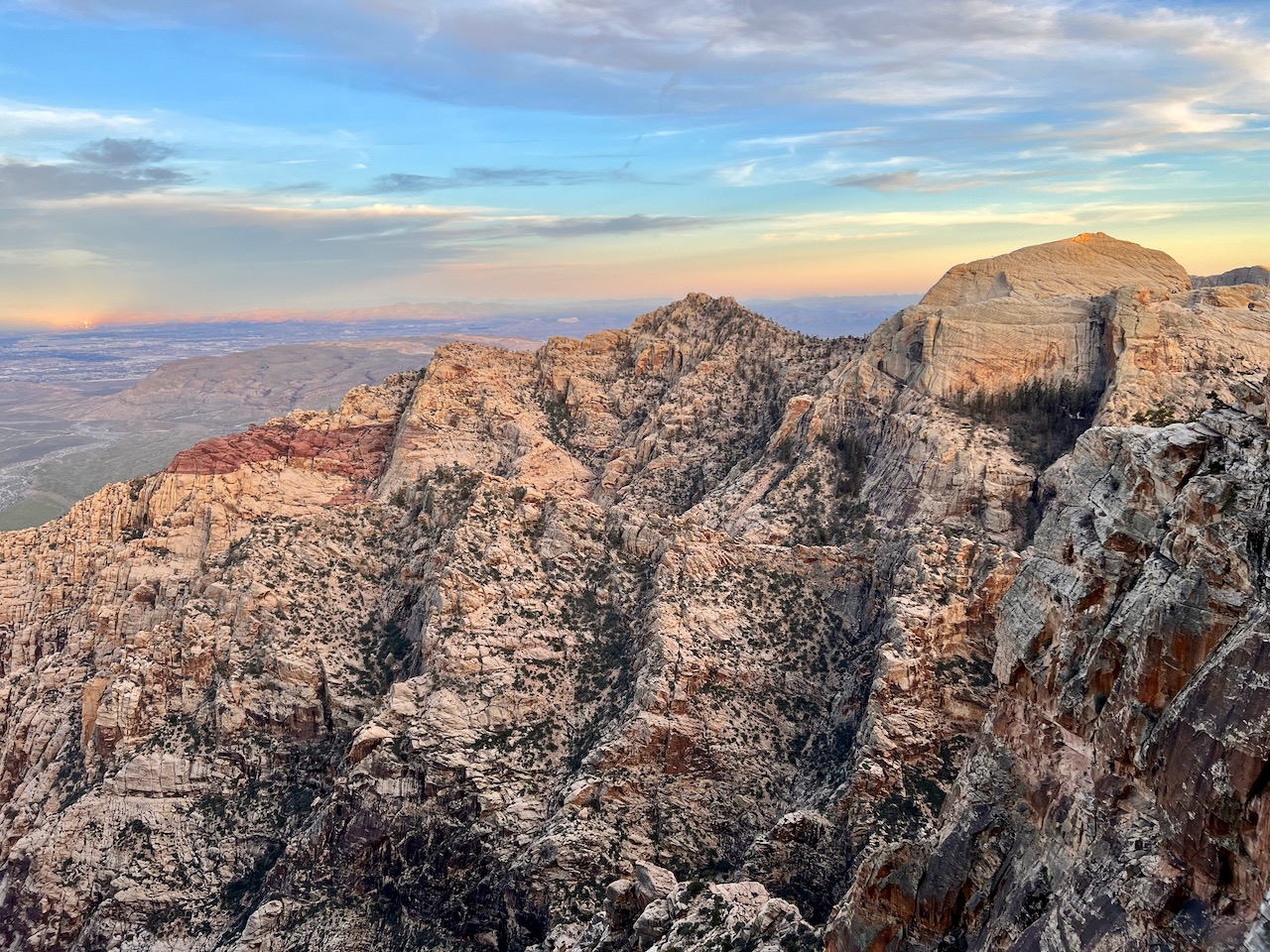
Dreefee and Crystal Dawn
In March, I found myself unemployed and decided to make the most of my situation by throwing together a three-week trip to Red Rocks with my long-time partner, Mike Kerzhner, for the following month. This trip had been on my bucket list for years, and our priority was to tackle Dreefee, one of the hardest routes in Red Rocks, with five 5.13 pitches. I had also been eyeing Crystal Dawn, an eight-pitch climb with two overhanging and sporty 5.13 pitches, and two more rated 12+. These two routes had been on my radar for years, but we decided we would prioritize Dreefee.
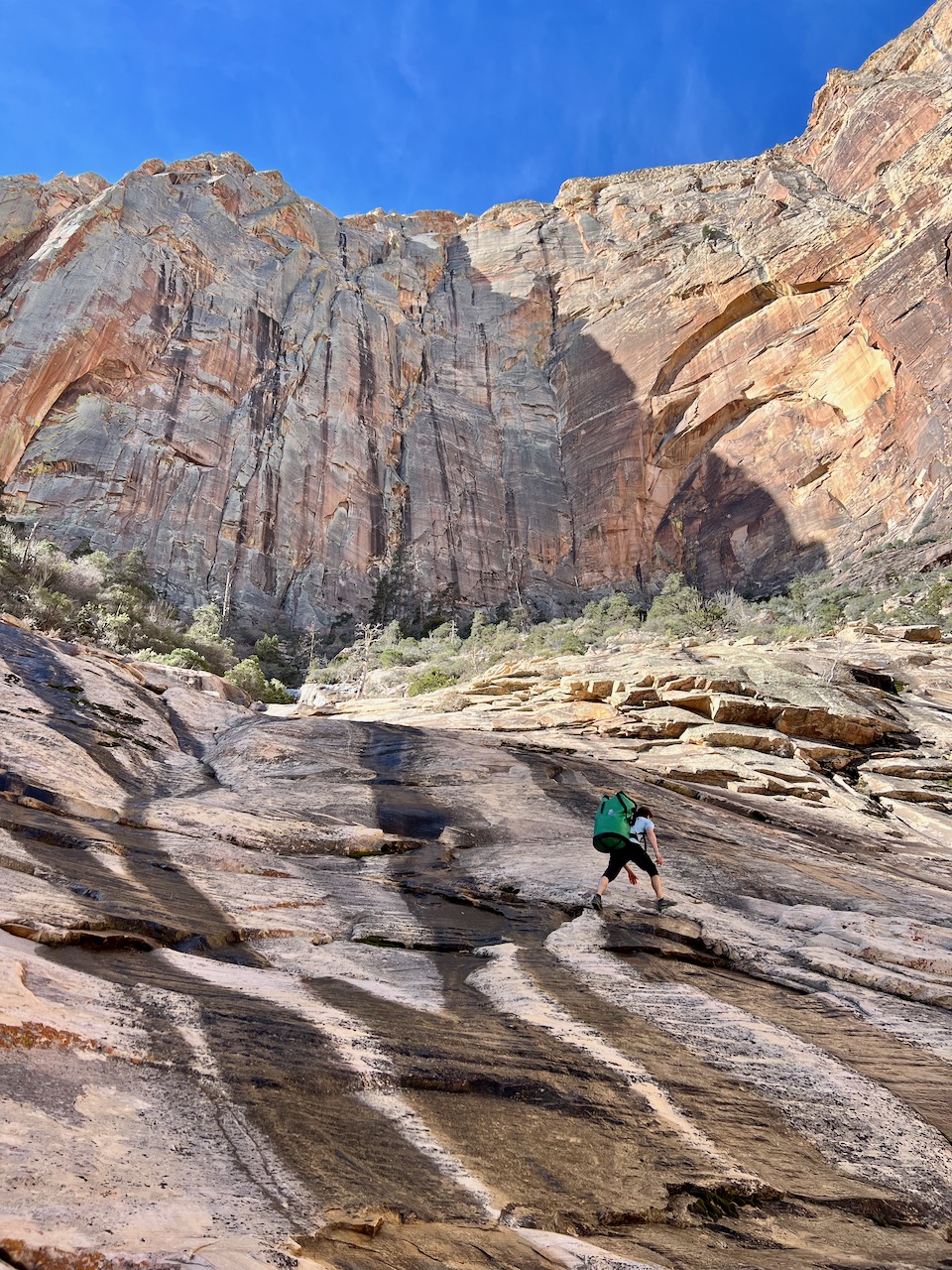
Mike approaching Rainbow Wall.
Dreefee
When we started working on Dreefee, it felt very difficult and I began to doubt my ability to complete it. One move on the third 5.13 pitch (pitch 5) kept shutting me down, and I struggled to do it consistently. I thought there would be a fairly high chance of failure, but after four days of work, I decided to try to lead the route on 4/17. I climbed better than expected with just one fall on the one 5.13- pitch I thought I was most likely not to fall on (the second 5.13). However, as I was trying to climb over a mossy and chossy bulge on pitch 9, my foothold broke, and I fell, almost knocking over a huge teetering block onto Mike below. I decided to call it quits there and skip the easier but significantly more dangerous climb to the top. The rock quality is very good until the last 5.13 and then the quality deteriorates mid-pitch. The last 5.12 is OK – fun climbing on marginal rock. It takes you to a series of large ledges, which is where I turned around. It felt like a fair spot, with all the good and hard climbing below.
Two days later, Mike also sent Dreefee, and it was the first time I had fully supported someone on jumars and the first time he had been fully supported by someone. It was the coldest day on the wall we experienced the whole trip, with a bitter wind chill. Despite Mike struggling with the second 5.13 pitch (the same pitch I fell on), he managed to get through it and then didn't fall the rest of the way. The climb follows beautiful natural features on exceptional rock through pitch 6, with pitch 7 being the supposed crux, though many people agree that it's not the crux now that new beta has been found after the first ascent. The route is characterized by technical vertical climbing with boulder problems here and there that require finger strength and good footwork. Dreefee is definitely one of the best hard multi-pitch routes I've ever done, with absolutely beautiful climbing.
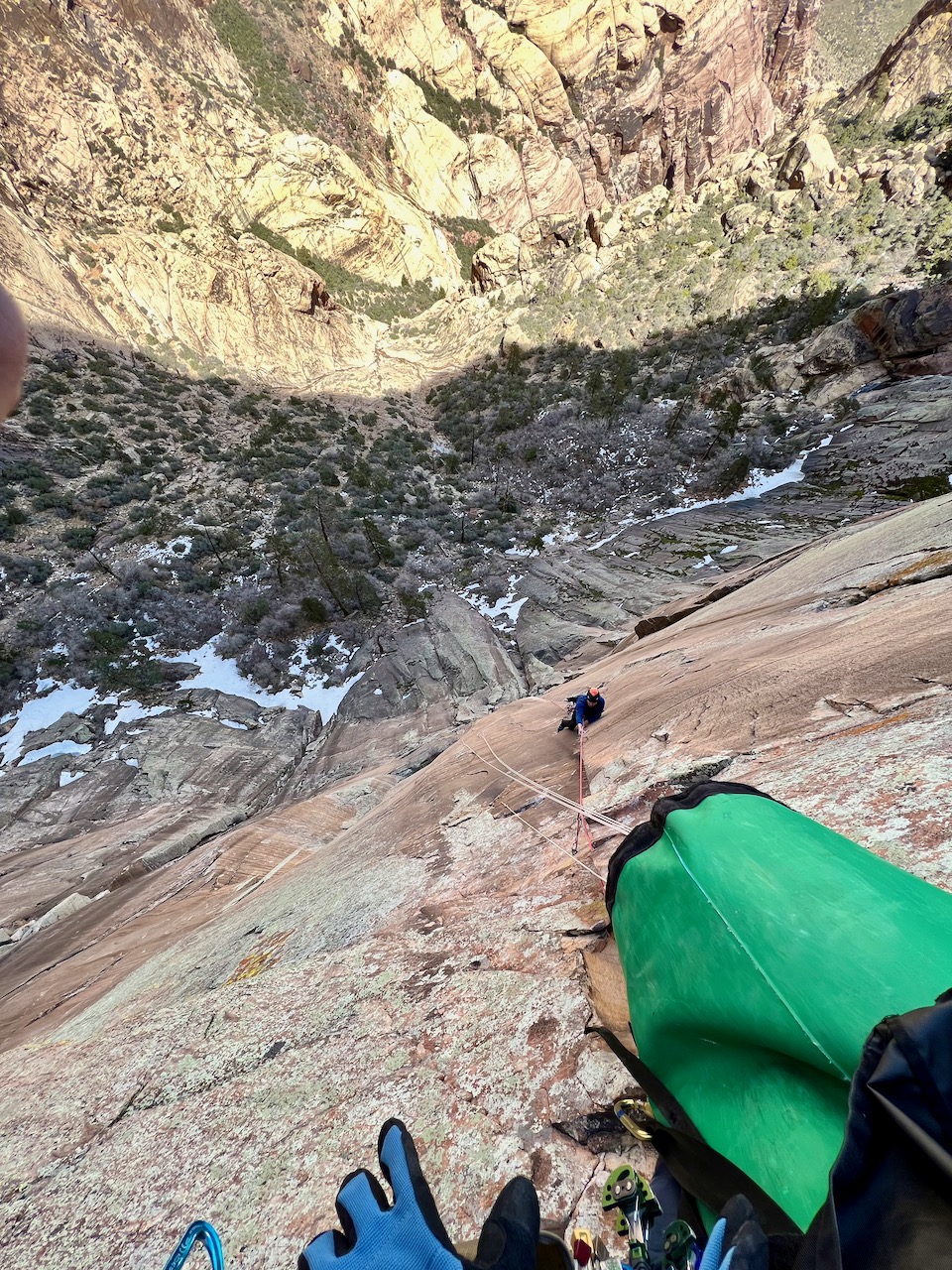
Dreefee’s 1st 5.13 (13b).

Mike shivering below the 2nd 5.13 (13b).
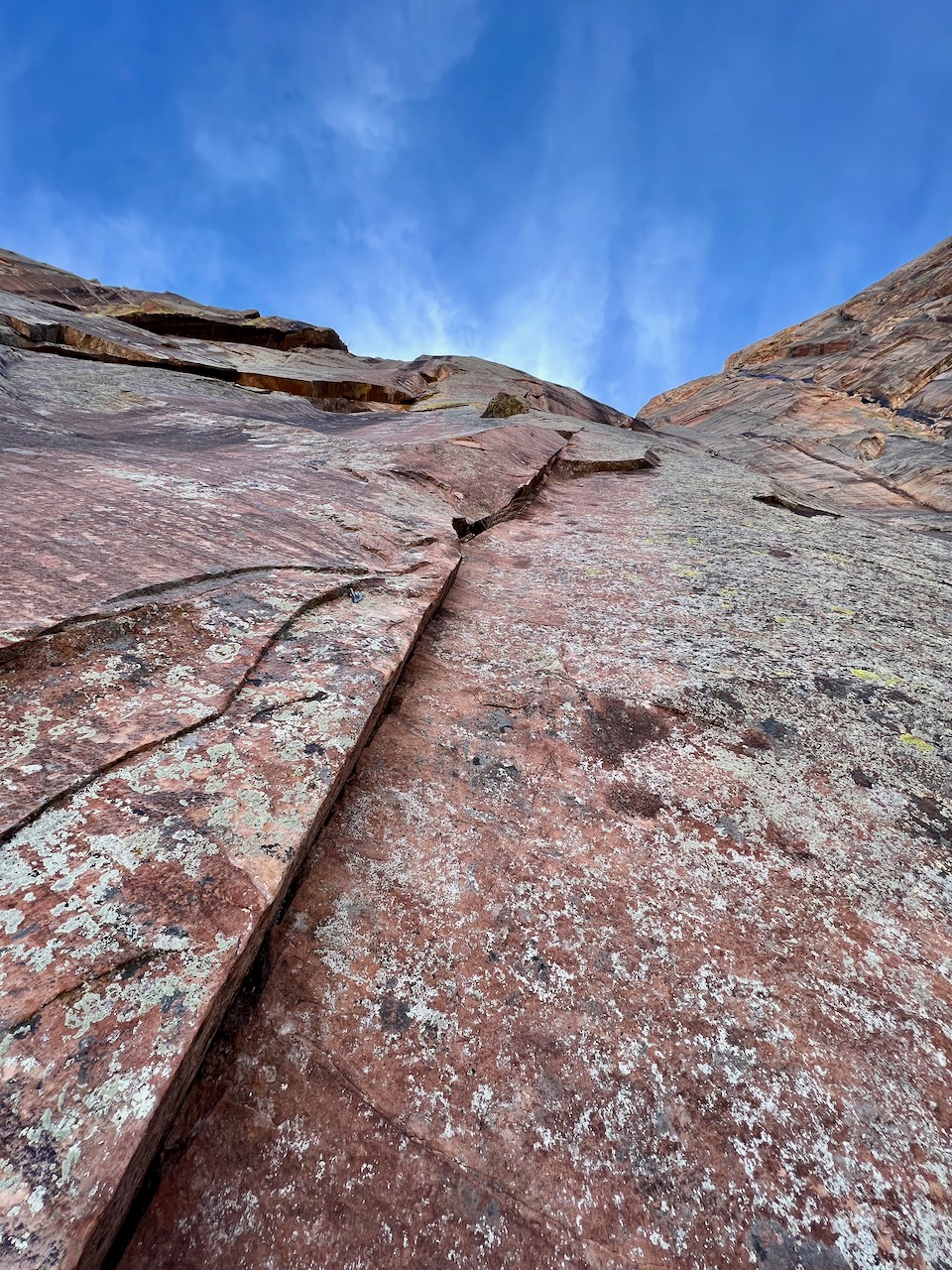
Dreefee’s 2nd 5.13 (13b).
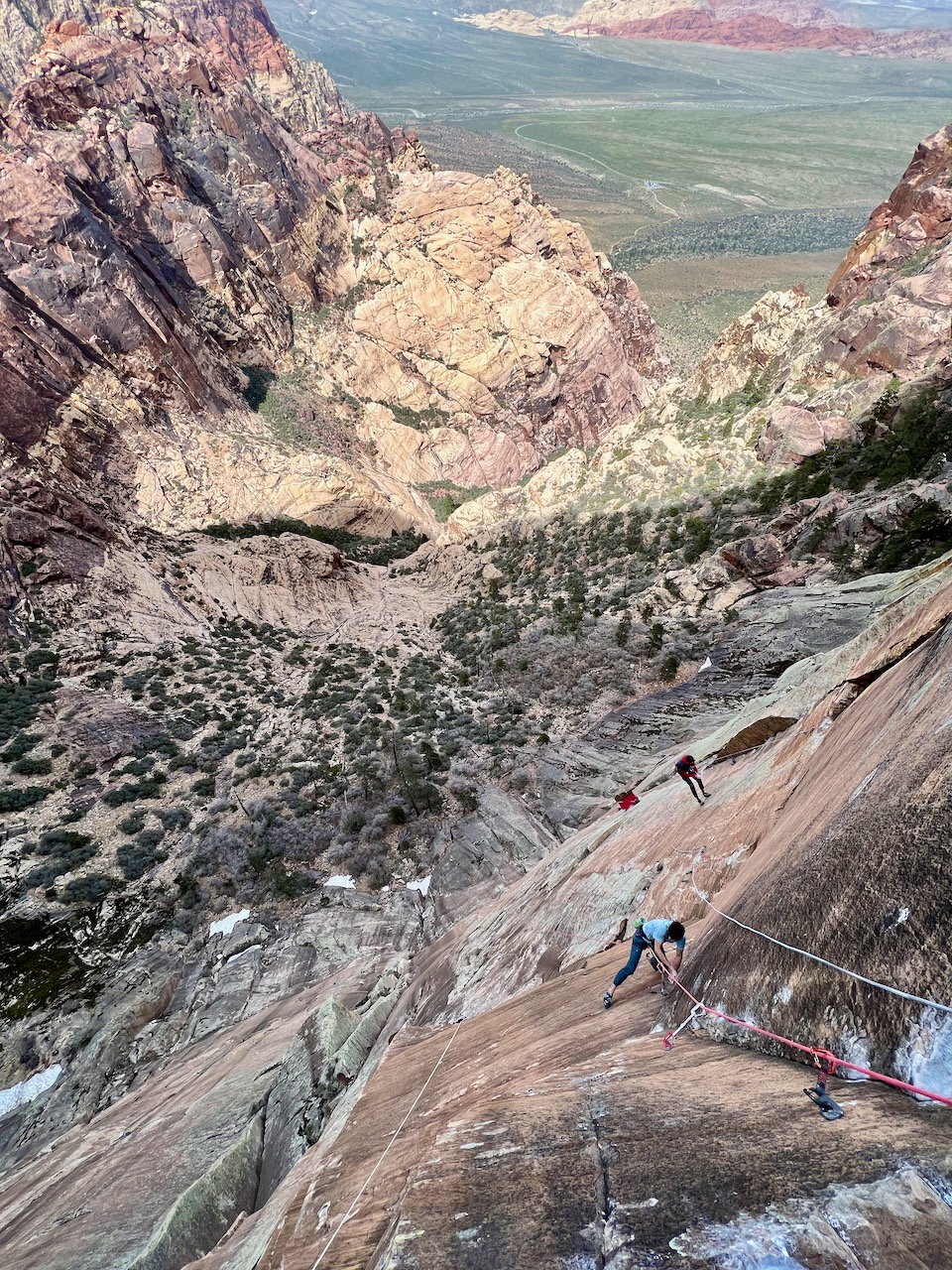
Apple on Dreefee’s 3rd 5.13 (what I felt was the hardest pitch, rated 13c, but felt 13d) and Mike on the 4th 5.13 (13c).
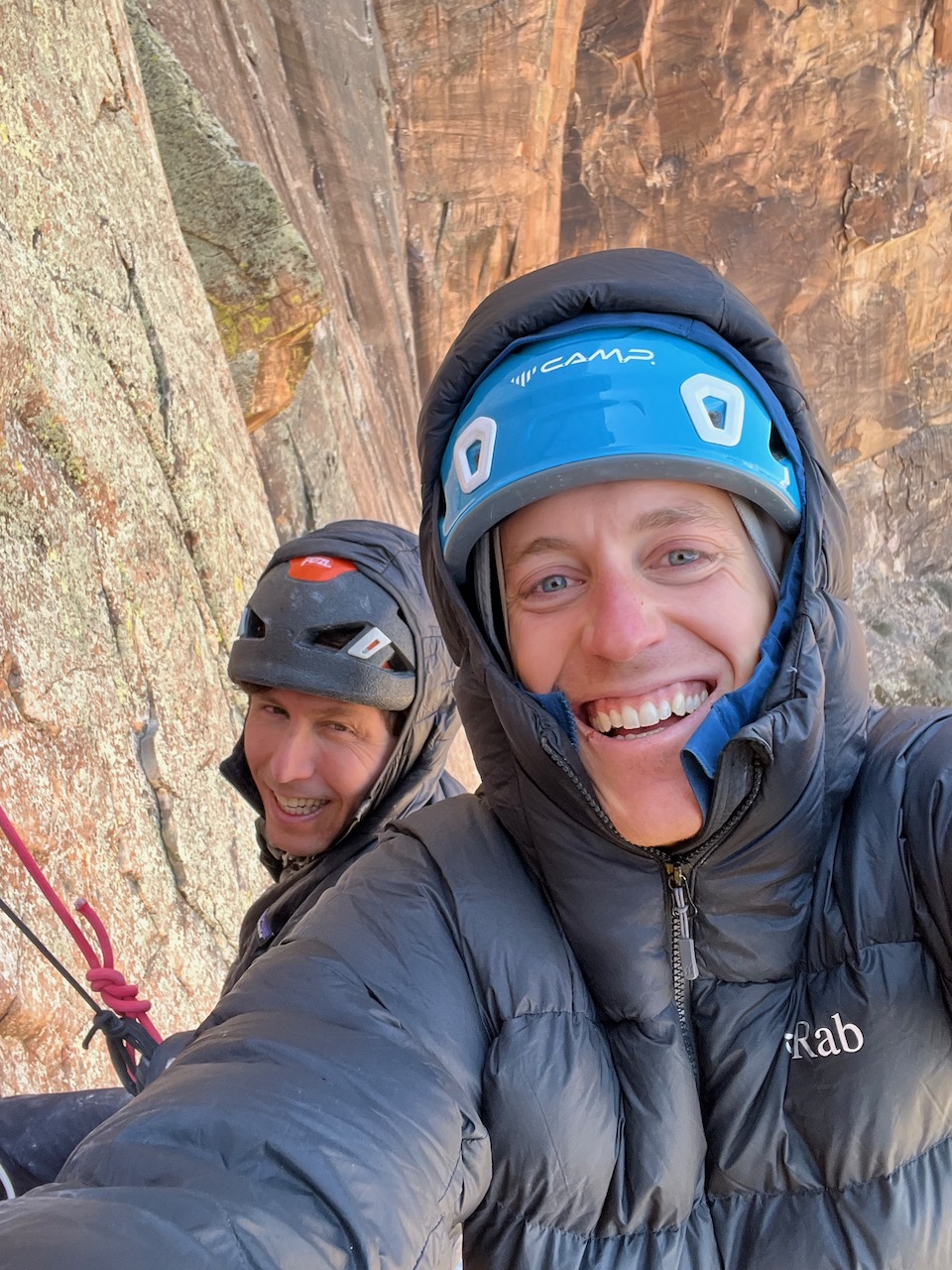
Success!
Crystal Dawn
I was able to spend one day early in our trip on Crystal Dawn when it was too cold on Rainbow Wall (where Dreefee is), and another day while Mike was resting for his attempt on Dreefee. So, a couple of days after Mike sent Dreefee, I was ready to attempt Crystal Dawn. My climb went smoothly, with just one fall on the crux pitch, mainly just to get warmed up. Mike also came away with an impressive attempt, having not spent time on the route in a couple of weeks, leading the crux and following all other pitches clean.
Crystal Dawn follows a crazy line through some huge roofs midway up, with the two hardest pitches being overhung. The crux pitch is a punchy sport climb with some really excellent holds and movement. The third-hardest pitch is a 12d slab that climbs one of the most perfect sections of rock in Red Rocks. It's stunning. However, leading the easier pitches on Crystal Dawn was scary. While I am super happy to have climbed a couple of life list routes, I'm feeling done climbing at Red Rocks for a while.
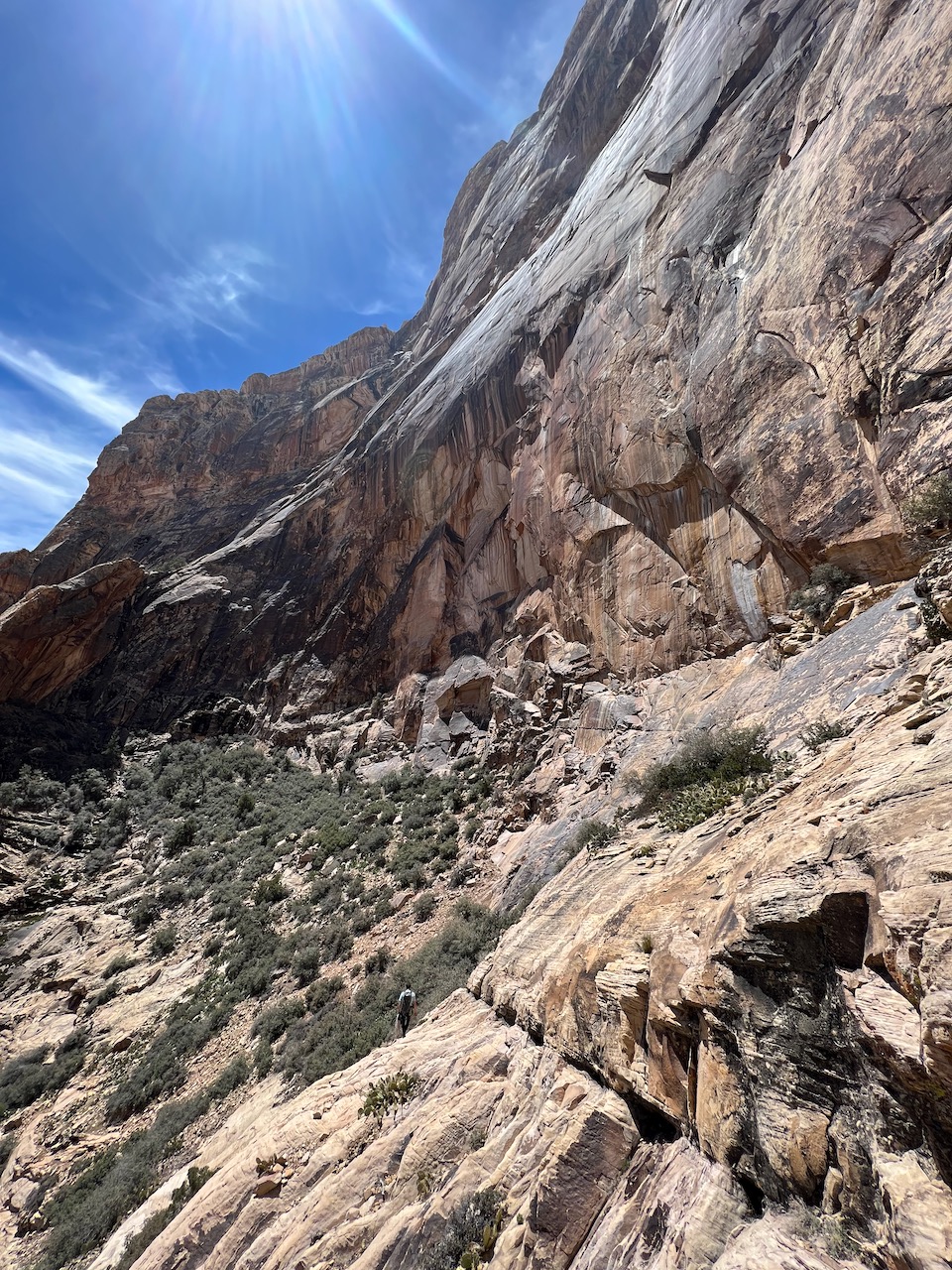
Mike approaching traversing the base of Buffalo Wall. Crystal Dawn climbs through the steep shaded portion of the wall and through the slabs in the sun.
The rock in Red Rocks can be beautiful but also terribly scary, with loose sandy blocks and long runouts. Because of a bolting ban, many of these routes are not protected as well as they could be. I was often scared doing a completely unnecessary runout on holds that could break, and some of the gear I placed didn't feel as secure as it should. As I will soon be a dad (!!), my tolerance for this kind of risk is pretty low. That said, these two routes stand out as a couple of the best hard multi-pitch routes in North America.
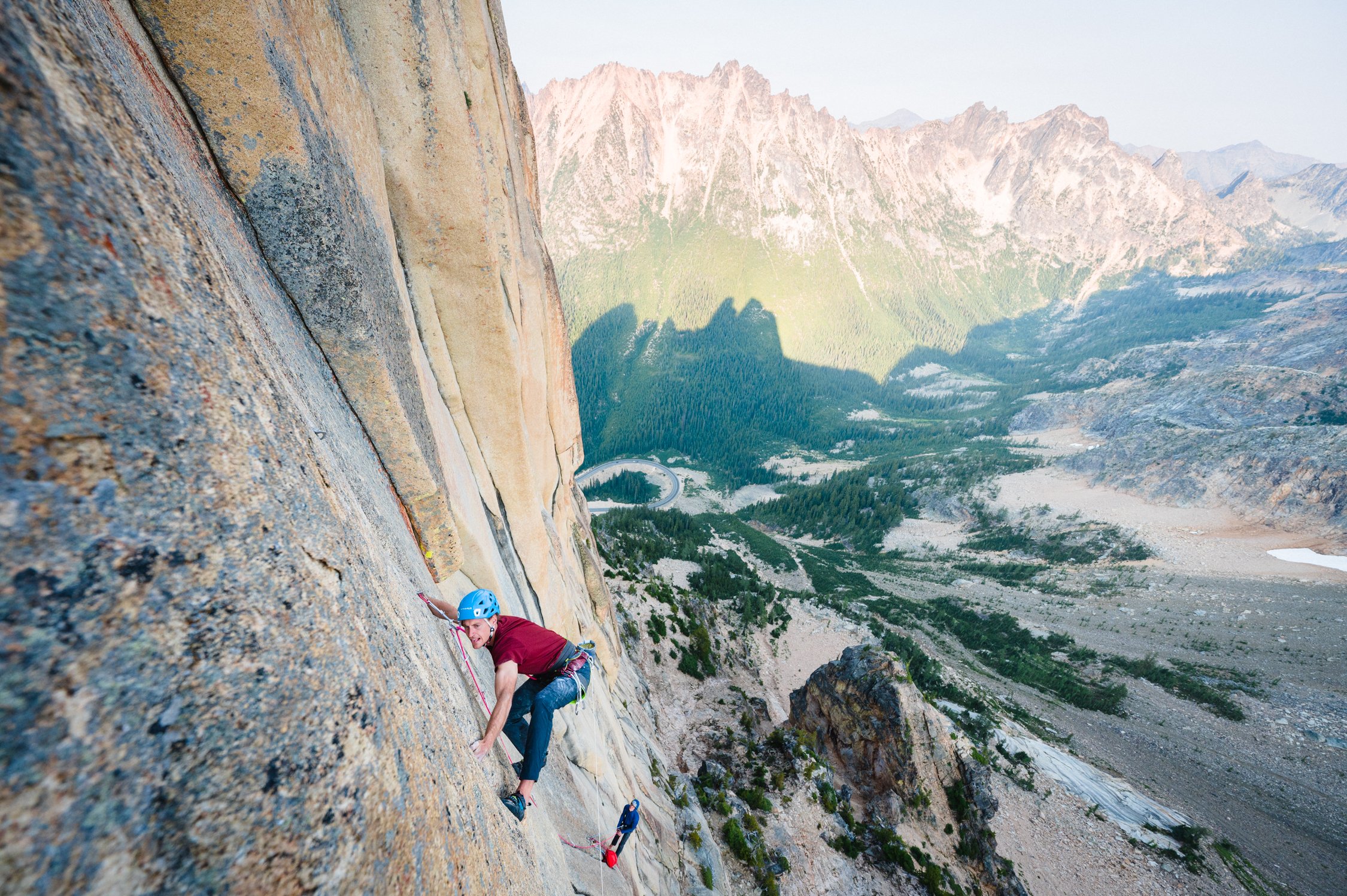
Rubbernecker
Excited to share about this special route!
Rubbernecker, South Early Winter Spire, Washington Pass — one of the highest quality routes that I have developed and is also the hardest.
For now I’ll just point to articles I wrote for the American Alpine Club and Rab. The Climbing Magazine article is an interview write-up by Anthony Walsh.
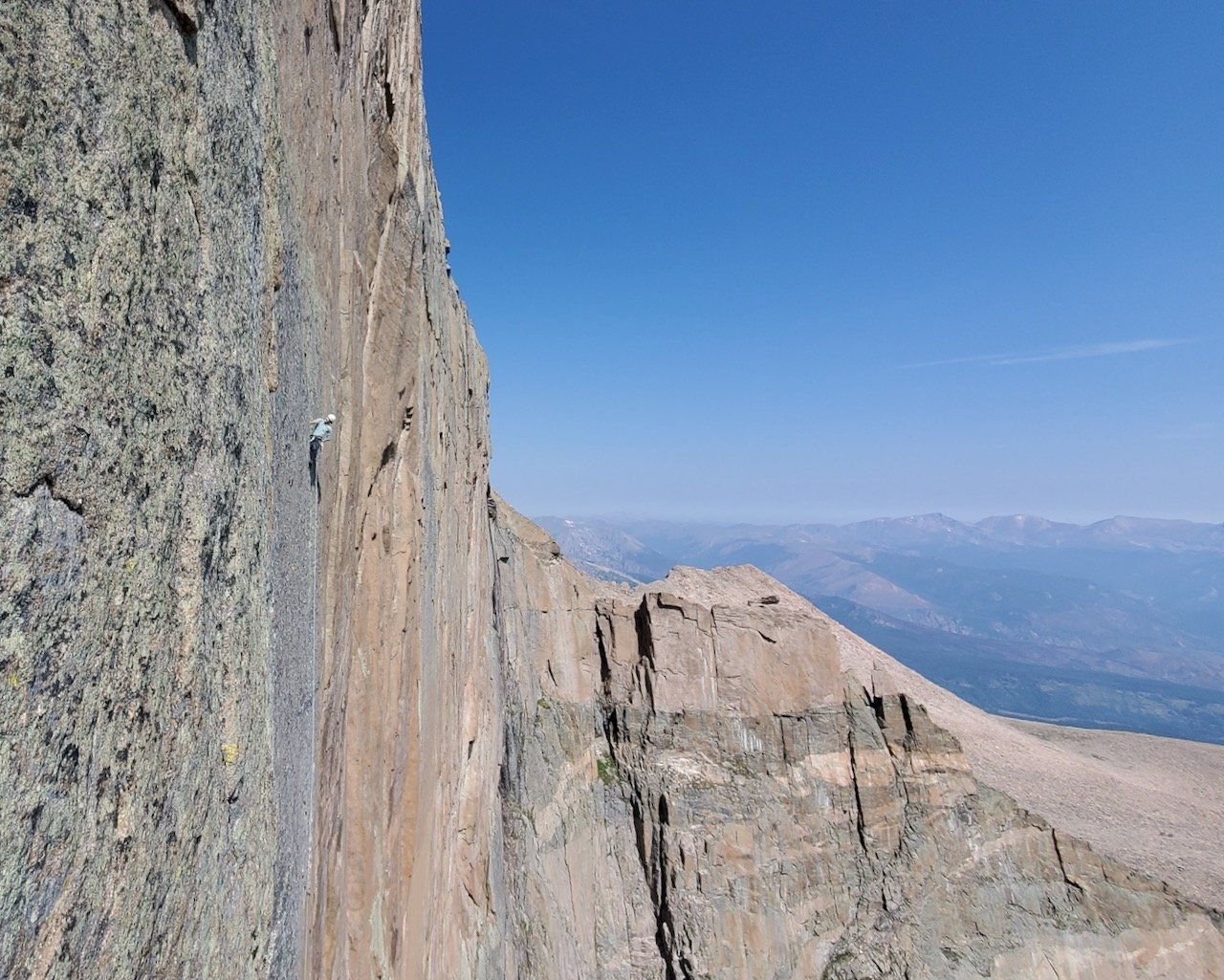
Climbing the crux pitch of The Honeymoon is Over
Long's Peak Diamond
This writeup is a year late, but I wanted to make sure I had something down for this great 2021 trip to the Long’s Peak Diamond with my good friend Mike Kerzhner. If you like hard multipitch climbing in the mountains as much as I do, then a trip to the Diamond is essential. There is nothing like it in North America – a beautiful high elevation wall stacked with hard routes. That’s coming from someone who loves the rock walls of the Cascades more than any other range.
After recently putting up Rubbernecker in the Washington Pass alpine, Washington now has a 5.14 alpine multipitch, and taken together with other routes like Backseat Driver, The Dark Side of Liberty, and Deep Blue – all mid to hard 5.13s – Washington definitely does not lack a legit collection of hard multipitch routes in the mountains. But the main thing Washington alpine multipitch climbing does not have is the elevation. The Washington alpine starts around six thousand feet and our alpine walls are generally starting at seven thousand. The Diamond starts nearly a mile higher!
Going into a 10 day trip, there were two routes on the Diamond that I wanted to check out – The Honeymoon is Over (5.13c, 1000ft, 7 pitches) and the new route, Gambler’s Fallacy (5.13b, 1000ft, 9 pitches), which at the time hadn’t seen a second-ascent. I knew it might be ambitious to try for both of them in such a short window.
First, Mike and I “warmed up” on Eroica (5.12b, 1000ft), which proved to be more then we bargained for! I was slammed by mild altitude sickness near the top of the wall and just wanted to lay down and take a nap. I was super fatigued and had a splitting headache but knew that the best thing I could do was to get down the mountain. Altitude can debilitate you, but to fix it you have to move! Down! Not lay down, though that’s absolutely the thing you want to do most. That first day was a 15 hour push. In the words of a sport climber, we got a little flash pumped (meaning, our chosen warmup was wayyy to hard and we suffered for our ambition). Climbing anything on this wall was serious.
Day two on the Diamond, we hiked to the top of Long’s and dropped into The Honeymoon is Over (THIO) to work it out on toprope. THIO has three pitches of 5.13 in a row, which at the time, was one of the most sustained multipitch routes I’d tried. Each pitch has its own character. The first and the crux pitch, a 5.13c, is characterized by sustained and technical laybacking, compression, and bad feet. The second, a 5.13b, is composed of boulders split with good rests. And the last, a 5.13a, is pumpy and powerful, and just not that much easier than the other two 5.13s!
Day three on the Diamond, we climbed THIO ground up. I sent leading every pitch, falling once on the 13c pitch. Mike sent the 13c and 13b pitches on TR, but was too exhausted from our cumulative efforts over the last 5 days to finish in good style.
After three climbing days on the Diamond over a span of 5 days, we needed to rest. we spent the next four days relaxing by the river, sport climbing, scrambling on the Flatirons, reading, and hanging out with friends. I needed time to build psych to go back to the Diamond. And I knew I had only one day left for the Diamond, so I needed to make it count. My objective would be to climb the new route Gambler’s Fallacy (5.13b) ground-up in-a-day, which had yet to see a second ascent.
Well, I lucked out, and after several hours of slowly inching my way up wet hand jams, kneebars, power laybacking, and insecure slab moves, I found myself at the top of Gambler’s Fallacy without falling once. A flashed second-ascent.
Climbing something that hard in the alpine first try is an accomplishment I’m very proud of. I was able to translate climbing skills – learned in the gym routesetting, at the local crags, and while traveling – to this harsh high-elevation environment, where conditions certainly are not comfortable. To me, climbing a route like this in this style is the fullest expression of my climbing craft.
Only 4 days on the Diamond, but that was all our 10 days and psych would allow! Certainly looking forward to making it back soon.
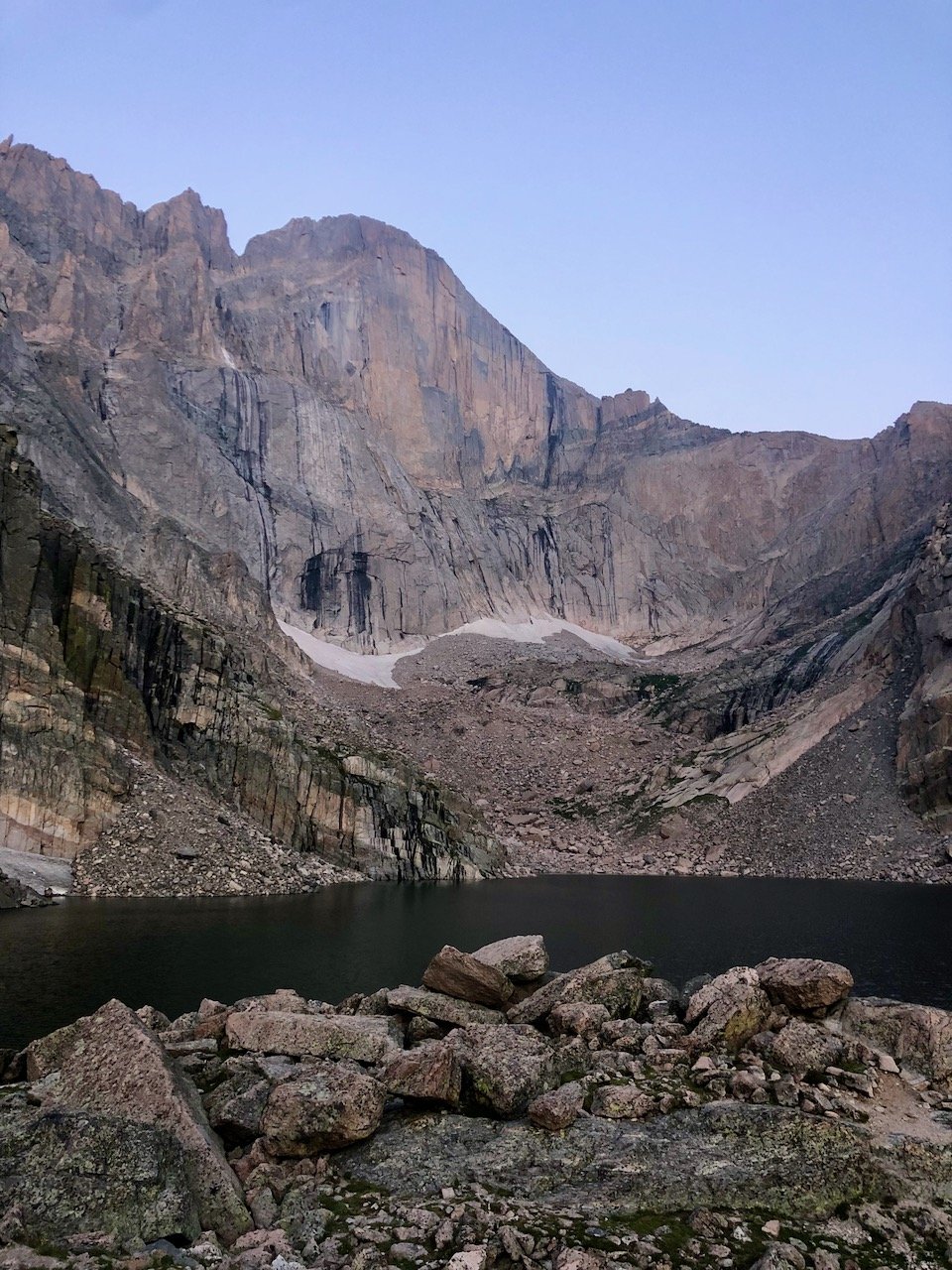
Approaching the Diamond in the early morning.
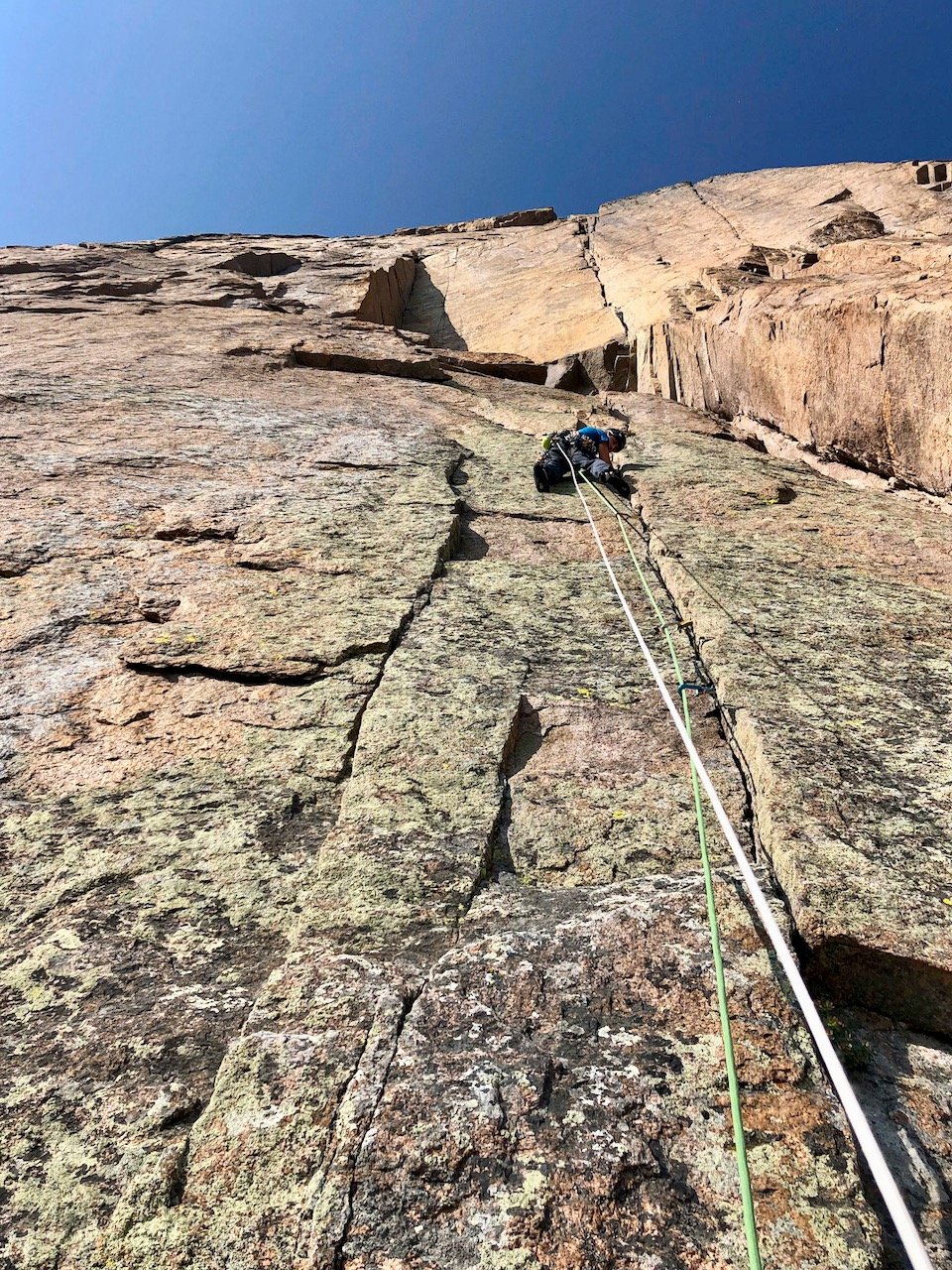
Mike questing up the fourth pitch of Gambler’s Fallacy.
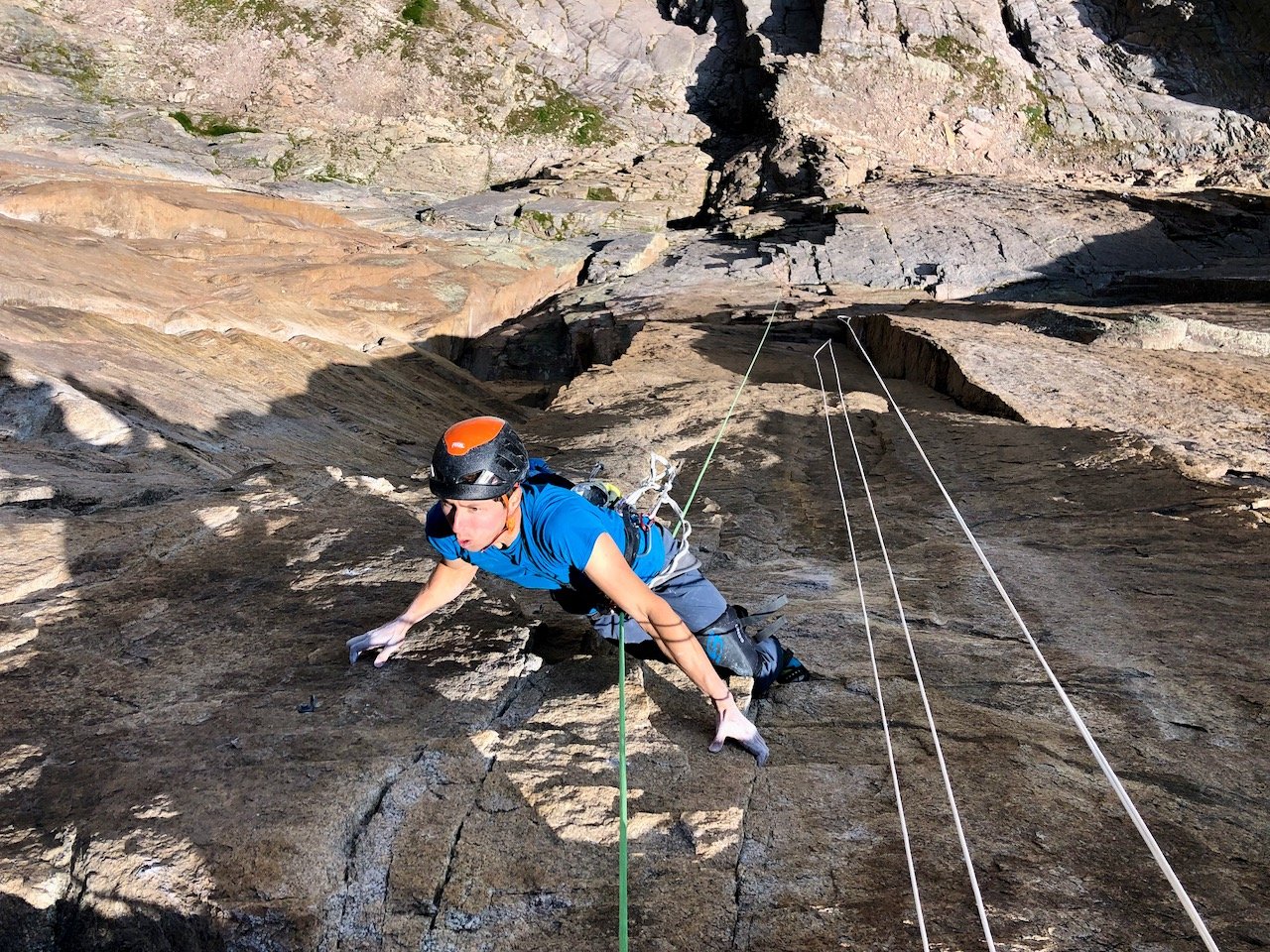
Mike on the first 5.13 pitch of Gambler’s Fallacy.

Mike finding a no-hands rest on the second 5.13 pitch of Gambler’s Fallacy.
Archive
2023
Dreefee and Crystal Dawn
Rubbernecker
2022
Long's Peak Diamond
Seattle Design Festival Interview
Seeing Circuits: an Interview with the Bouldering Project
2020
Vanishing Point 2.0: A Classic Route Modernized
Interview with Steven Dimmitt
Training Using Circuits
Cuba
2019
Dark Side of Liberty
The Bugaboos
Blue Jeans Direct: The End of the Canadian Rockies Ticklist
The Path
The Shining Uncut
Castles in the Sky
Scarface
Index's First 5.14
Turkey
2018
Patagonia
2017
Dark Side of the Valley
Vanishing Point
Winter Climbing
First Route in the Alaska Range
New York Gully